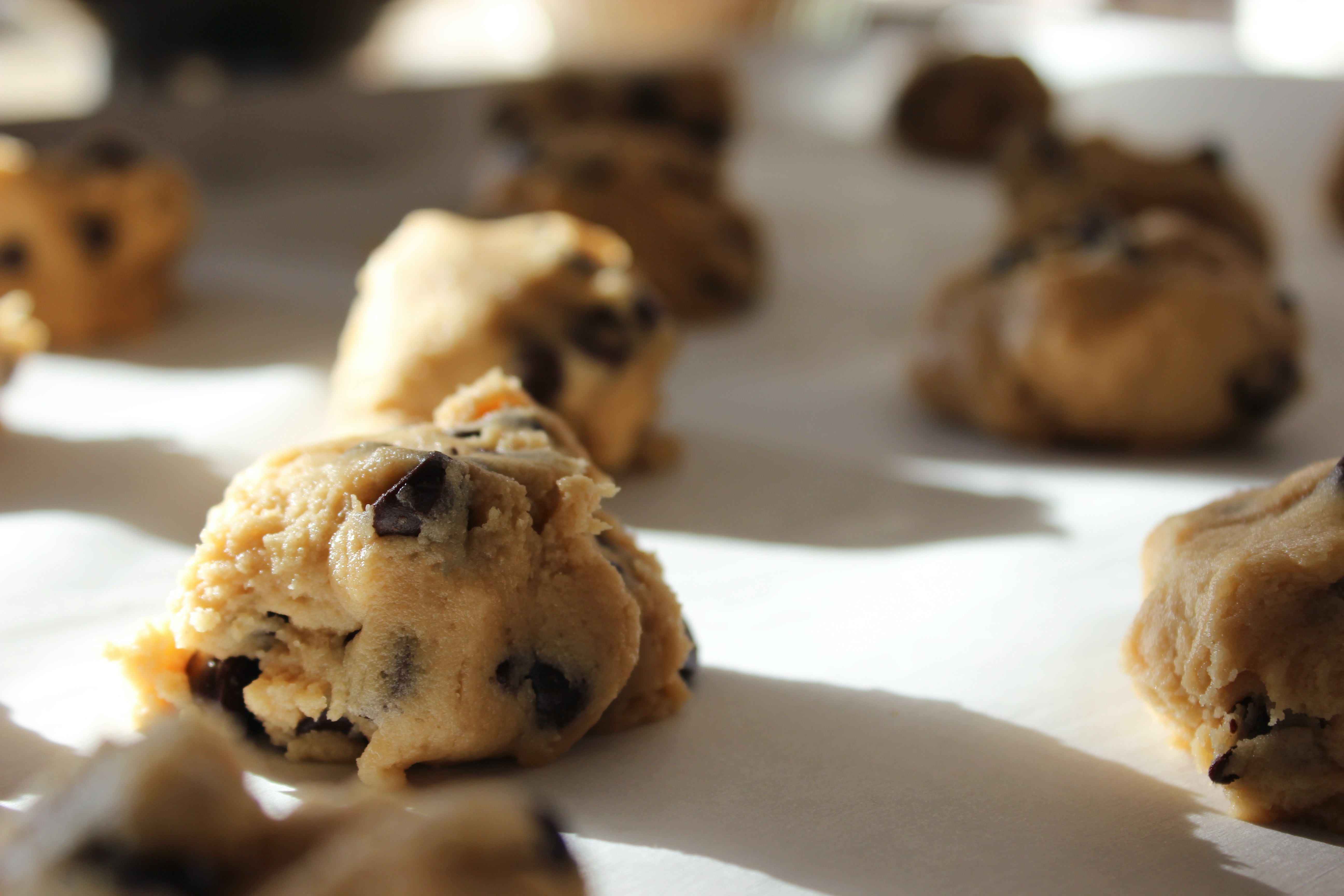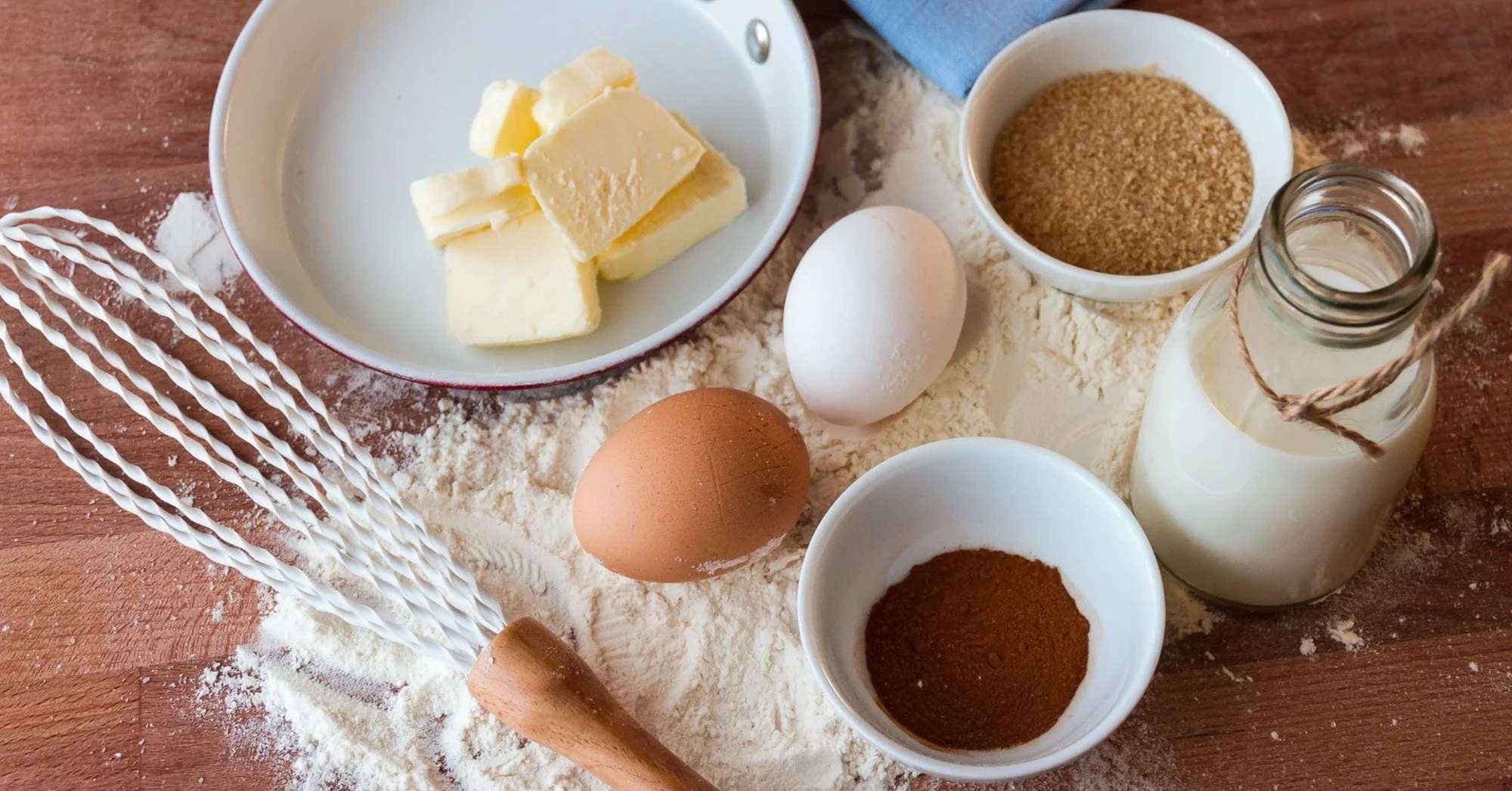Baking has become all the rage while we're all under lockdown, whether it's chewy fudgy brownies, classic kuih Raya, or sourdough bread. In fact, it's become so popular that some baking supplies are now near-impossible to find on supermarket shelves! ?
Credit: Giphy
Supermarkets and baking good stores have been restocking as fast as they can, but baking must-have's such as unsalted butter or cream cheese are still hard to get. ? But not all hope is lost! There are many substitutes for you to make your delicious cakes, cookies, and more. ? Keep reading to find out what they are!
1. Cake/bread/self-raising flour
If you're running short on cake, bread, or self-raising flour the good news is that all-purpose flour is a much more accessible substitute! ?

Credit: Share Food Singapore on Facebook
This useful infographic by Share Food Singapore is an easy guide to what you need to achieve that perfect mix:
- For 1 cup bread flour, substitute 1 cup all-purpose flour
- For 1 cup cake flour, substitute 3/4 cup all-purpose flour and 1/4 cup cornstarch
- For 1 cup pastry flour, substitute 1 cup and 2 tbsp all-purpose flour and 2 tbsp cornstarch
- For 1 cup self-raising flour, substitute 1 cup all-purpose flour, 1 1/2 tsp baking powder, and 1/4 tsp salt
Of course, you may find yourself needing to add in more water to your dough in some circumstances as there are still minute differences between the flours' protein levels. Make sure to keep an eye on your mixture's consistency and adjust accordingly.
P.S. Try these out for yourself with these 8 easy cake recipes - including banana cake and coffee cake! ?
2. Unsalted butter
Another popular ingredient that's quickly being snatched up by fellow bakers is unsalted butter, which you can find in everything from savoury one-pot meals to classic pineapple kuih. While salted butter can still be found, it may not seem easy to substitute in salted butter without having to adjust your entire recipe.

Here's what you should do:
- For 1 cup unsalted butter, substitute 1 cup salted butter and adjust the salt in the rest of the recipe accordingly
- For 1 cup unsalted butter, substitute 1 cup margarine
- For 1 cup unsalted butter, substitute 1 cup solid vegetable shortening and a pinch of salt
- For 1 cup unsalted butter, substitute 3/4 cup oil (Make sure to choose a neutral oil such as canola so that the final product's taste won't be altered.)
If you're trying to avoid trans fats from margarine, you can also try to substitute half of the required butter with applesauce or oil - but do be careful with using oil as it can lead to more watery mixtures!
3. Cream cheese
Who else has been craving cheesecake but can't seem to find enough cream cheese to finally make some? ?? Cream cheese is a super versatile ingredient, acting as a binder, thickener, sweetener, or frosting - just like in these kid-friendly cinnamon rolls!

So your substitute will have to depend on what the cream cheese is supposed to do in the original recipe:
- For 1 cup cream cheese, substitute 1 cup pureed cottage cheese (You might need to add in a pinch of margarine depending on the fat content of the cottage cheese)
- For 1 cup cream cheese, substitute 1 cup strained plain/Greek yoghurt
Cottage cheese and yoghurt are sourer than cream cheese, so remember to balance out the sourness with some sugar, honey, or pureed dates (this can help add some texture too). Mascarpone or ricotta cheese can also be used, but mascarpone is a bit lighter than cream cheese whereas ricotta is slightly firmer. So you may have to adjust the amounts of flour or other ingredients to get the right texture.
4. Baking soda/powder
Baking soda and powder are 2 ingredients that often get confused, but the key difference is that baking soda is sodium bicarbonate, and baking powder is sodium bicarbonate as well as a dry acid. Both ingredients require liquid to activate, but baking soda will need an additional acidic ingredient (e.g. lemon juice) to complete the process.

So what does that mean for the everyday home baker? ? For most recipes, baking powder can be substituted in for baking soda with slight adjustments, but not vice versa. Here's what you can do:
- For 1 tsp baking soda, substitute 3 tsp baking powder and adjust salt levels in your recipe accordingly. You might get a salty or bitter taste due to the other ingredients in baking powder so keep tasting your mixture and try to cut the saltiness with sugar or a dash of citrus.
- For 1 tsp baking powder, substitute 1/2 cup buttermilk and 1/4 tsp baking soda and adjust the liquids in your recipe accordingly
- For 1 tsp baking powder, substitute 1/2 cup plain yoghurt and 1/4 tsp baking soda and adjust liquids accordingly
- For 1 tsp baking powder, substitute 1/4 tsp baking powder and 1/2 tsp vinegar (white vinegar usually has the most neutral taste)
P.S. If you're adjusting the amount of flour in your mixture you might have to adjust the amount of baking soda. The general rule of thumb is 1/4 tsp baking soda for every 1 cup of flour. Keep an eye on the texture of your mixture if you're substituting in alternatives for baking powder too!
5. Instant/active dry yeast

With the sourdough bread trend still going strong, many people are starting to make their own sourdough starters to have their own DIY supply of yeast. But if you're not interested in making a sourdough starter here's a quick overview of the 3 main types of yeast to help you out:
- Fresh/compressed/cake yeast: composed of 100% living yeast bacteria, requires no proofing and is considered the fastest and also most perishable.
- Active dry yeast: Many of the cells are destroyed during processing, and the yeast must first be proofed or dissolved in a hot liquid to reactivate the living bacteria.
- Instant/rapid rise/bread yeast: More gently dried compared to active dry yeast, with every particle being living or active. Can be added directly into a recipe without being dissolved or proofed.

Instant and active dry yeast are the most popular options for casual baking as they can usually last you quite a while in the pantry. Other types of yeast can also be easily substituted for active yeast. However, if you desperately need a teaspoon of yeast ASAP and can't find any of these in the supermarket, here are useful alternatives to help you out:
- For 1 tsp yeast, substitute 1/2 tsp baking soda and 1/2 tsp lemon juice
- For 1 tsp yeast, substitute 1 tsp double-acting baking powder
As baking soda and baking powder have the same leavening qualities as yeast, they're a useful substitute for sure. However, there's nothing that will fully replace the effect of yeast so don't expect your final product to turn out exactly the same.
6. Cocoa powder

The ever-popular cocoa powder! ? From brownies to no-bake cakes, this is one ingredient that we can't live without. There are 2 kinds of cocoa powder you can typically find on the market - natural cocoa, and Dutch-Process cocoa. Dutch-Process cocoa is usually a little less acidic and intense than natural cocoa but both are pretty similar. So how can you get your chocolate fix when you're out of cocoa powder? Here's how:
- For 3 tbsp Dutch-Process cocoa powder, substitute 3 tbsp natural cocoa powder and 1/8 tsp baking soda
- For 3 tbsp natural cocoa powder, substitute 3 tbsp Dutch-Process cocoa powder and add in 1/8 tsp cream of tartar OR white vinegar OR lemon juice for every 3 tbsp of cocoa powder used (This will restore the acidity you get in natural cocoa powder)
- For 3 tbsp natural cocoa powder, substitute 1 oz unsweetened baking chocolate and remove 1 tbsp of butter/oil/shortening from the recipe to balance out the fat content
If you only have a cocoa mix on-hand (like the kind for hot chocolate) you technically can substitute it in but cocoa mix usually contains milk, sugar, and other ingredients that may affect the final product. So we don't recommend this unless you're very confident in your taste buds or your baking skills!
7. Semi-sweet chocolate chips

Another popular chocolate ingredient is semi-sweet chocolate chips, usually found in everyone's favourite chocolate chip cookies. ? Here are some alternatives to ensure you still get that chocolatey goodness:
- Chopped dark chocolate between 60%-70% is recommended although you can pick any chocolate bar that suits your taste and adjust any sugars in the recipe accordingly. Dark chocolate can generally be used in the exact same way, with minimal changes to the overall recipe.
- Carob pastilles or chips can also be substituted in for chocolate. Carob beans have a slightly nuttier taste, so you may want to balance it out with some sugar.
With some creativity, quick-thinking, and resourcefulness, you won't have any trouble baking anything your heart desires. ?
Join our channel!Join HHWT’S channel






